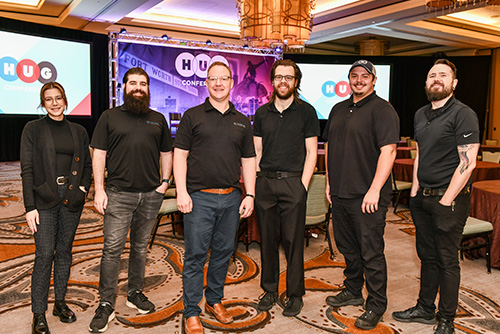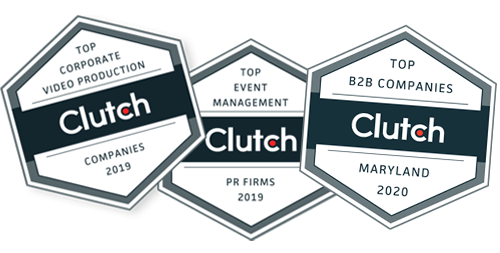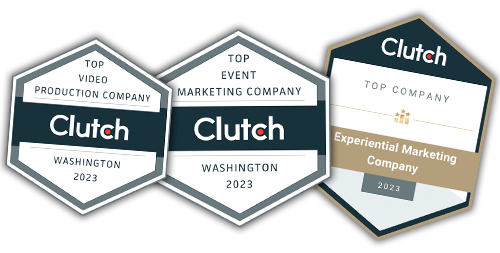Have you ever wondered how a video project goes from concept to production? At TalkingTree Creative, we use a strategic creative process to transform your message into a high-quality video that truly impacts your audience. This complex strategy utilizes tried and true methods of getting through to people on an emotional level.
What is the Strategic Creative process?
We begin by gathering information about your company and brand so that we can develop a unifying theme that will resonate with the audience. As we engineer the infrastructure and messaging for the video, we never lose sight of our ultimate goal – creating an engaging experience for your audience in an environment of communication.
Keep reading for a step-by-step explanation of TalkingTree Creative’s strategic creative process to learn more about how we can bring your next video project to life.
Step 1: Create the Vision
What we do and the way we do it requires that we know the audience, the stakeholders and the message. Then there are multiple levels of engagement, or layers to achieve success.
Audience
The first layer involves demographics. We identify the personality and cultural touchpoints of the audience, our client and the message itself. This is critical to saying the right thing in the right way. For example, a “Meet the Team” video for your website has a different audience than an audience for a trade show video — the first may be designed more for a potential employee thinking about joining your team while the second is created for prospects and customers.
Message and Theme
The message is like our cargo – it’s what we want to deliver to our audience – and the theme can be compared to the vehicle. Another way of thinking about the theme might be packaging. The theme serves as a context for the message and gives everyone a “space” to occupy.
There are different themes we consider for a video project, from seasonal to product-focused.
Story
Once we have our message and theme and we know who we’re communicating with, we need a story to tell. This can be implicit in the message or it may need to be constructed to carry the message within the theme. You could think of the story as the wheels. For instance, say your audience is potential customers and your message and theme is “Meet the Team,” you can tell
the story a number of ways. The video can be a tour around your office where you stop and check in with different team members, or you could do a more formal, interview setting. Whatever you decide, the next step is to develop a plan to shoot the video.
Step 2: Develop A Plan
Structural Framework
This is the layer in which our team works with our client’s team and the experience of collaboration is the most important experience we create. When the people feel comfortable and confident in the process as well as their partners, the ideas flow and the true personalities shine through. There is nothing more beautiful because it is the creation of great work and the development of enduring friendships.
At this stage of the project, we take a lot of the stress off your team to develop a video that speaks to your audience.
Environments that Communicate
We take pride in designing environments that make videos that stand out. Engineering the video set from the correct AV equipment to the lighting to the right acoustical experience and how it is all branded offers both technical and creative challenges.
Step 3: The Finished Product: Post Production
The final step that gives us the finished project is post-production. This is where video editing and graphic magic happens. Video editors and motion-graphic artists work together to edit the storyline, mix the soundtrack, add voiceover, and create special effects for the project.
Film post-production is one of the most important steps of making a video, and a great production company can turn your raw footage and ideas into a compelling, engaging product! What exactly goes into post-production work for a video?
Video Editing
After filming is over, the editing process begins. Video editors take a close look at the hours of raw footage available and choose the best takes for the final sequence. A professional production company will most likely use industry-standard editing tools like Adobe Premiere, Avid Media Composer, Final Cut Pro, or Davinci Resolve. Once we’ve picked the best takes, we then cut the film together in accordance with the script and storyboard in a way that pulls focus to your core messages. During editing, some companies may request additions or revisions – make sure you reach an agreement with your production company beforehand to avoid unnecessary delays.
Adding Special Effects
Special effects can liven up just about any video and can be an important part of your video’s post-production process. Adding motion-graphics or animation is a part of the editing process and the production company takes care to blend these special effects seamlessly with the rest of the video.
An example of special effects could be anything from a simple logo animation to a full-on explosion like you’d see in a Hollywood movie!
Mixing the Soundtrack
The music soundtrack of a video, though often overlooked as a minor detail, can truly take your production from bland to boss. Background music needs to blend in well with the visual portion of the project – it needs to match the tone of the video, match the pace of the edits, and help get your core message across to your target audience.
The tone of your video is largely informed by the music you choose, but the process is much more detailed than picking out a song. A sound designer customizes the soundtrack to match the pace, volume changes, and tempo of the action in the video. In the end, all the elements should feel like one beating heart rather than several elements packed into one product.
Recording the Voiceover
A voiceover isn’t necessary for all productions, but it can help you clarify your core message and drive home important points. Your production team will work with you to choose a voiceover artist that will best deliver your messages to your target audience. When recording the voiceover, the production company will often record several takes – this allows for flexibility in matching the voiceover to the video edit and helps make the production feel like a cohesive whole.
After these four post-production steps, the final project is a compelling video that engages your audience and drives your business forward!
At TalkingTree Creative our unique strategic creative process gives us an edge on the competition. Headquartered in the Baltimore-Washington corridor, our company serves national clients of all sizes and stages events at venues located throughout the country. Want to see for yourself? Get in touch with us today to get started on your next project!




